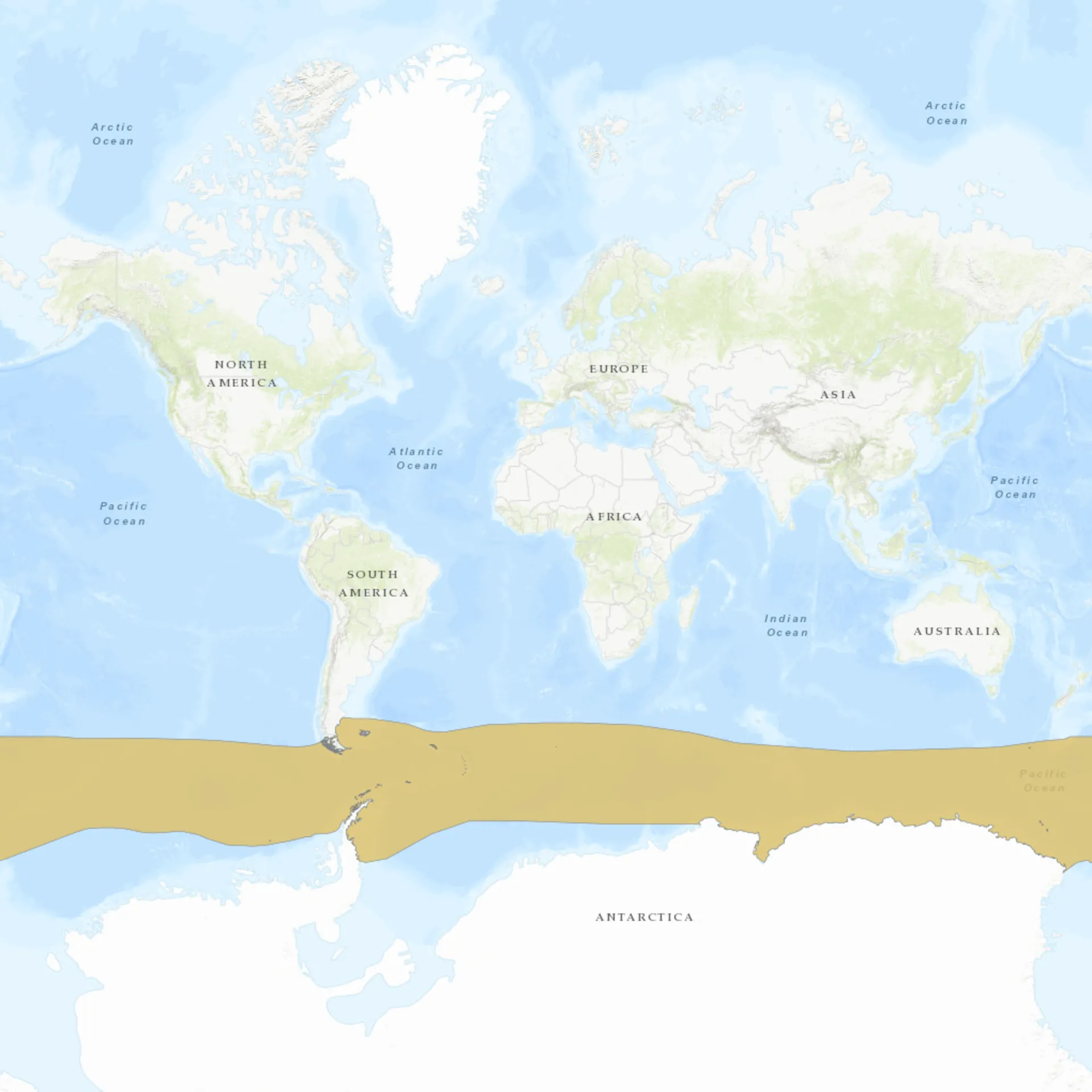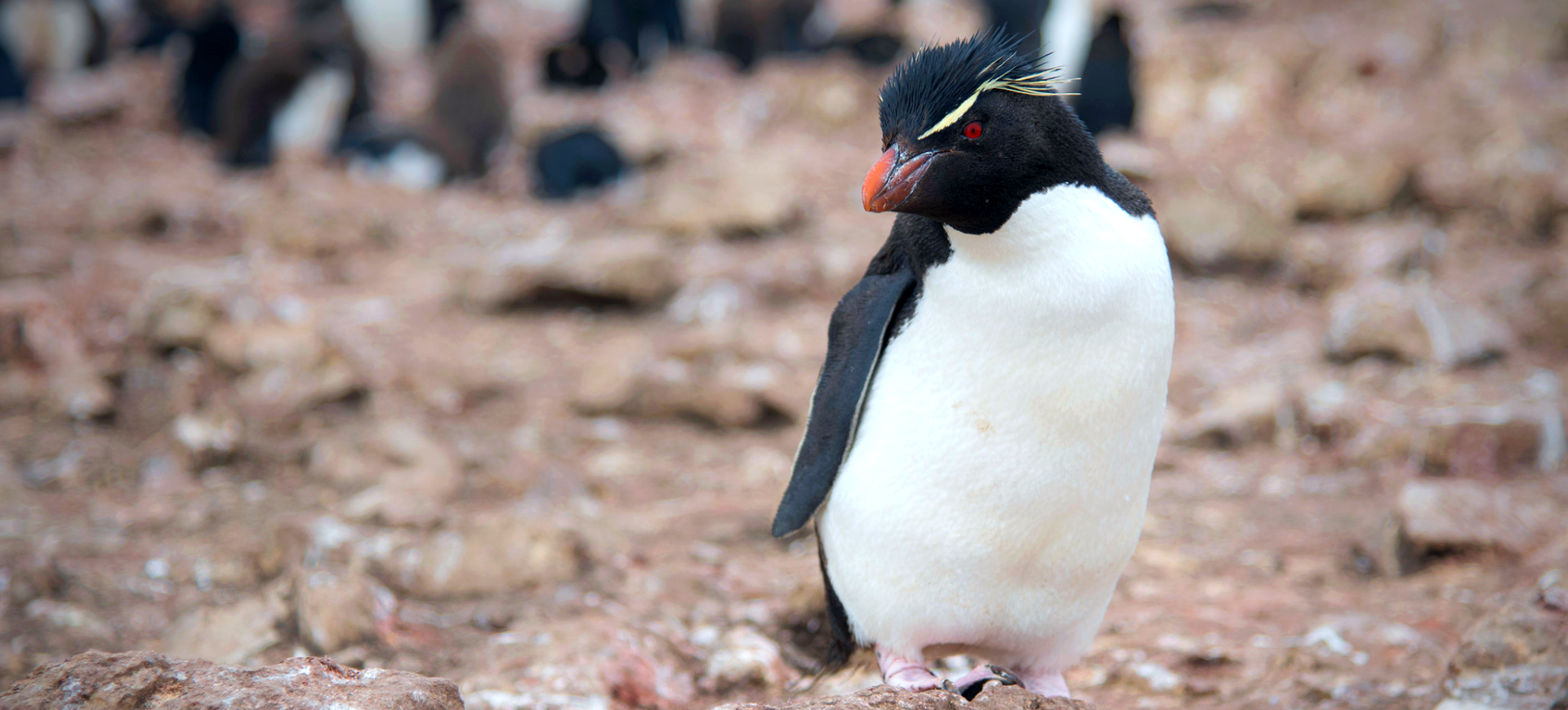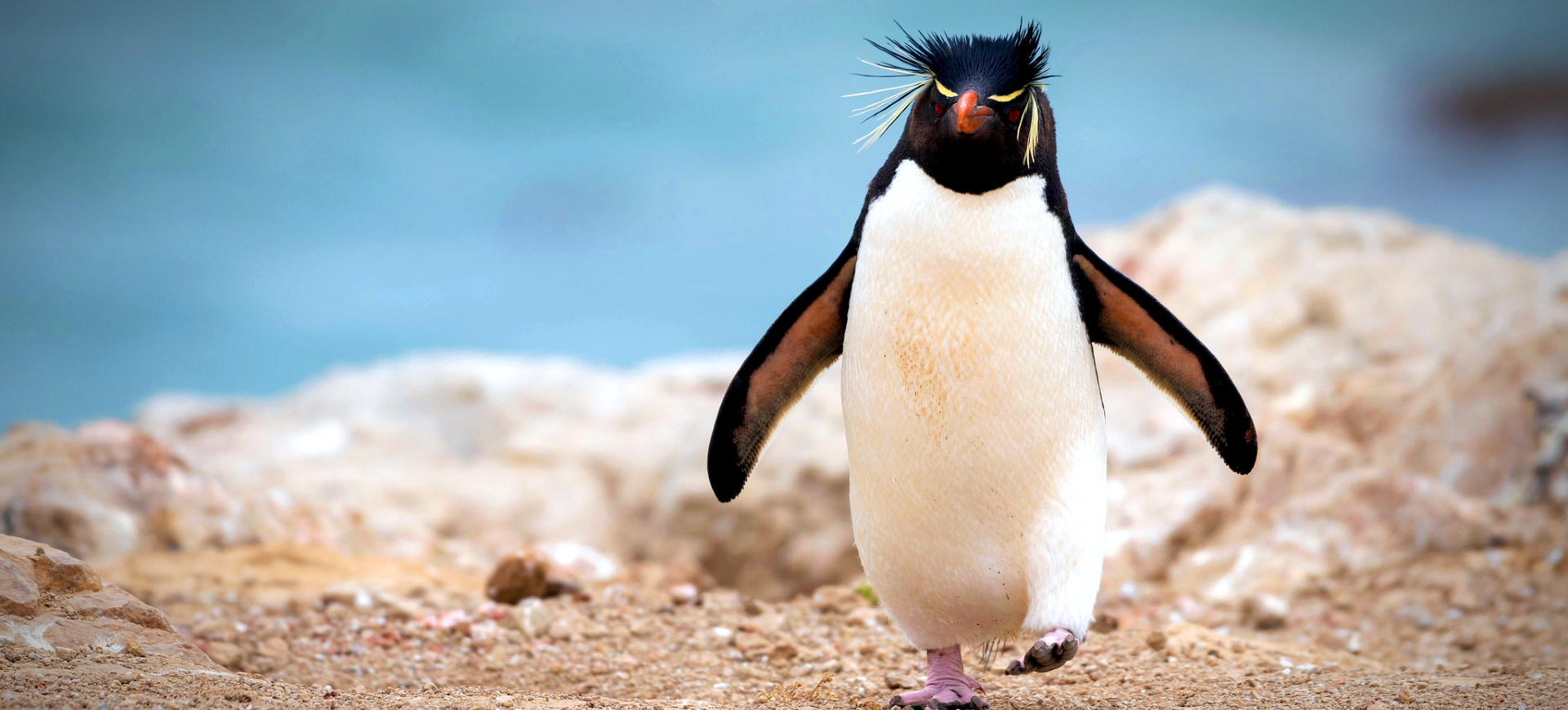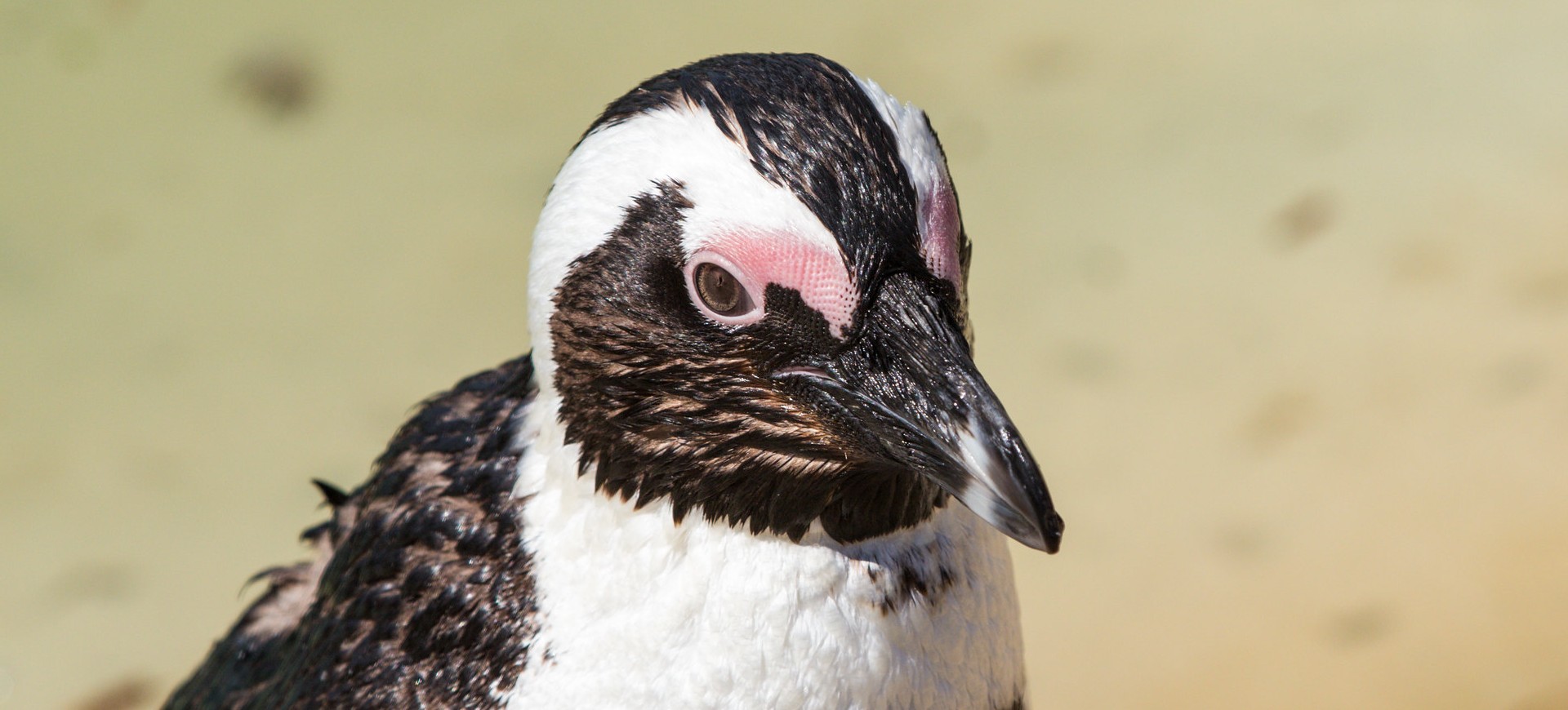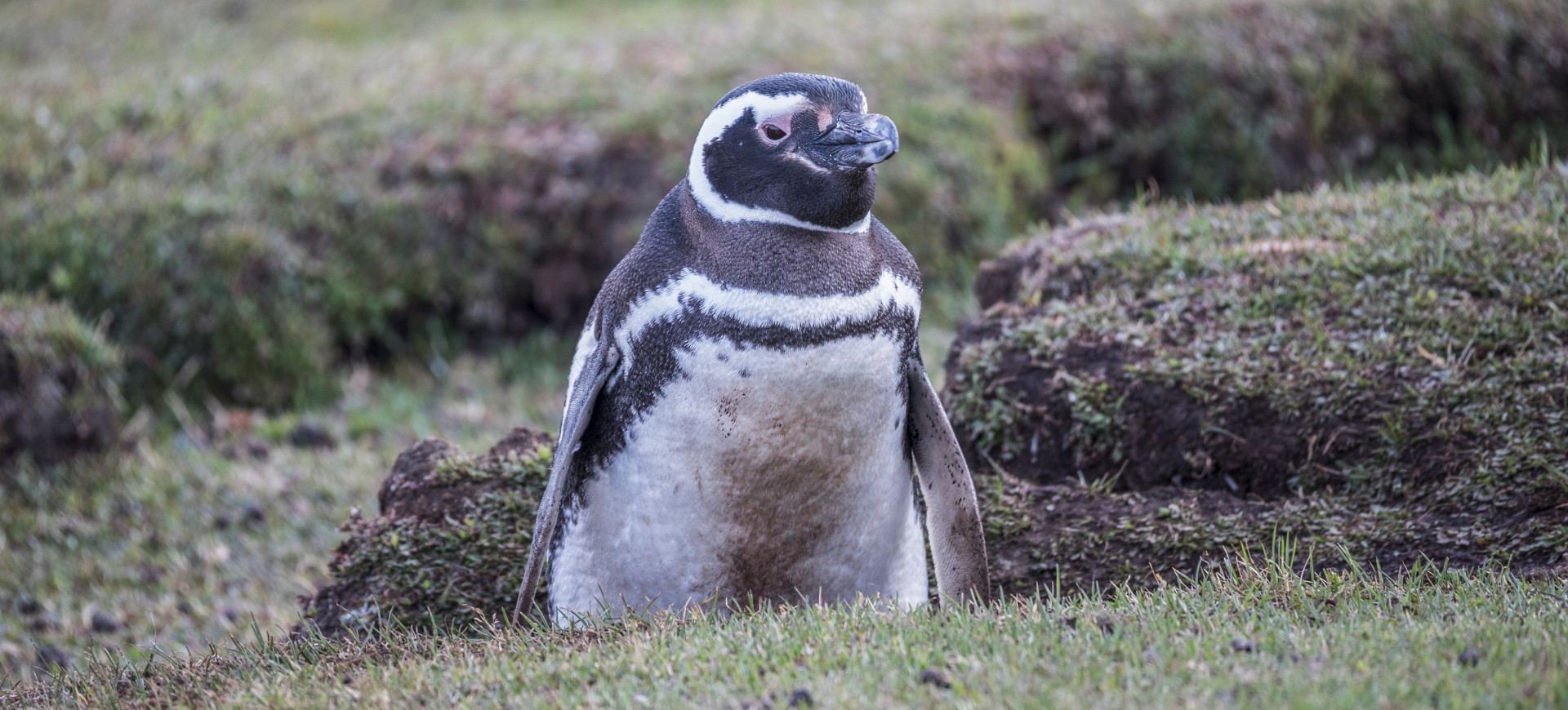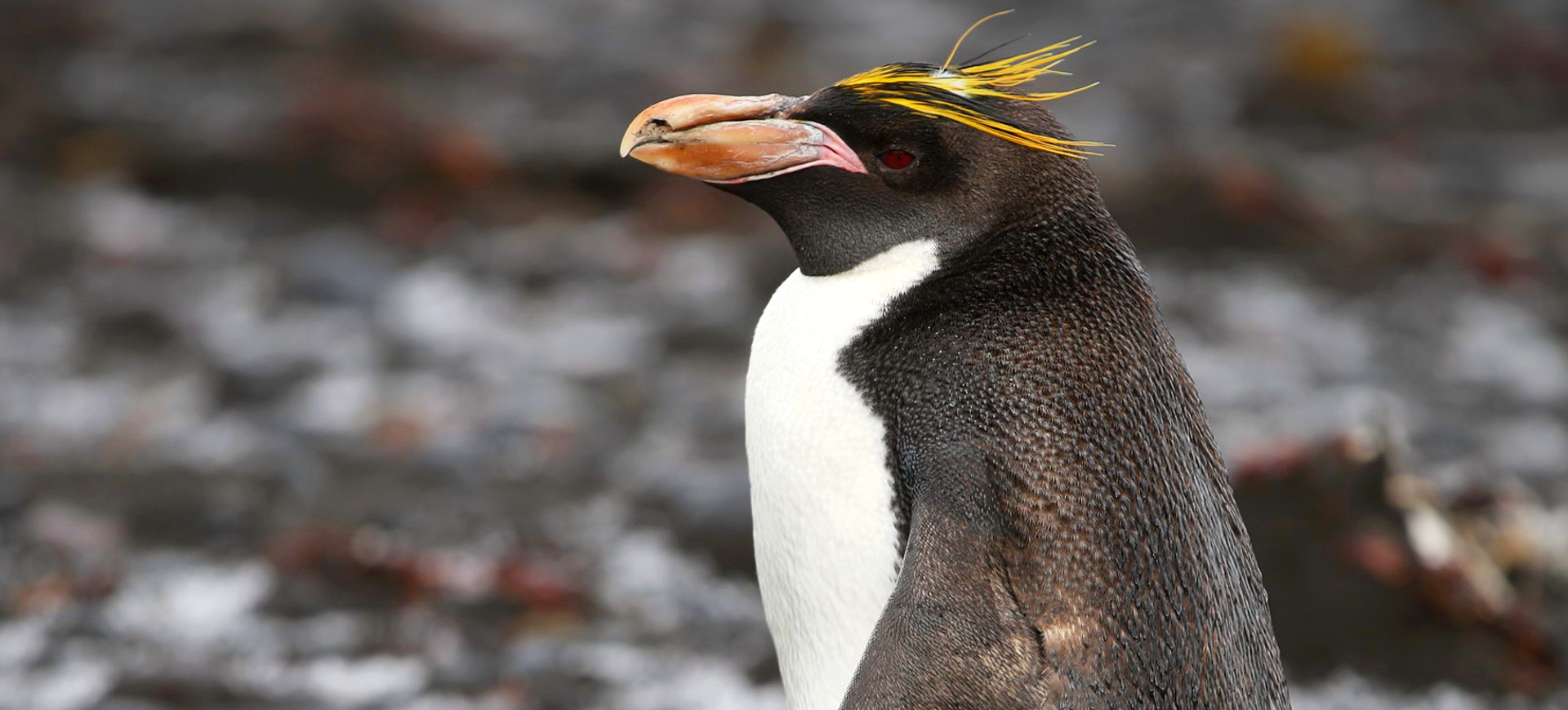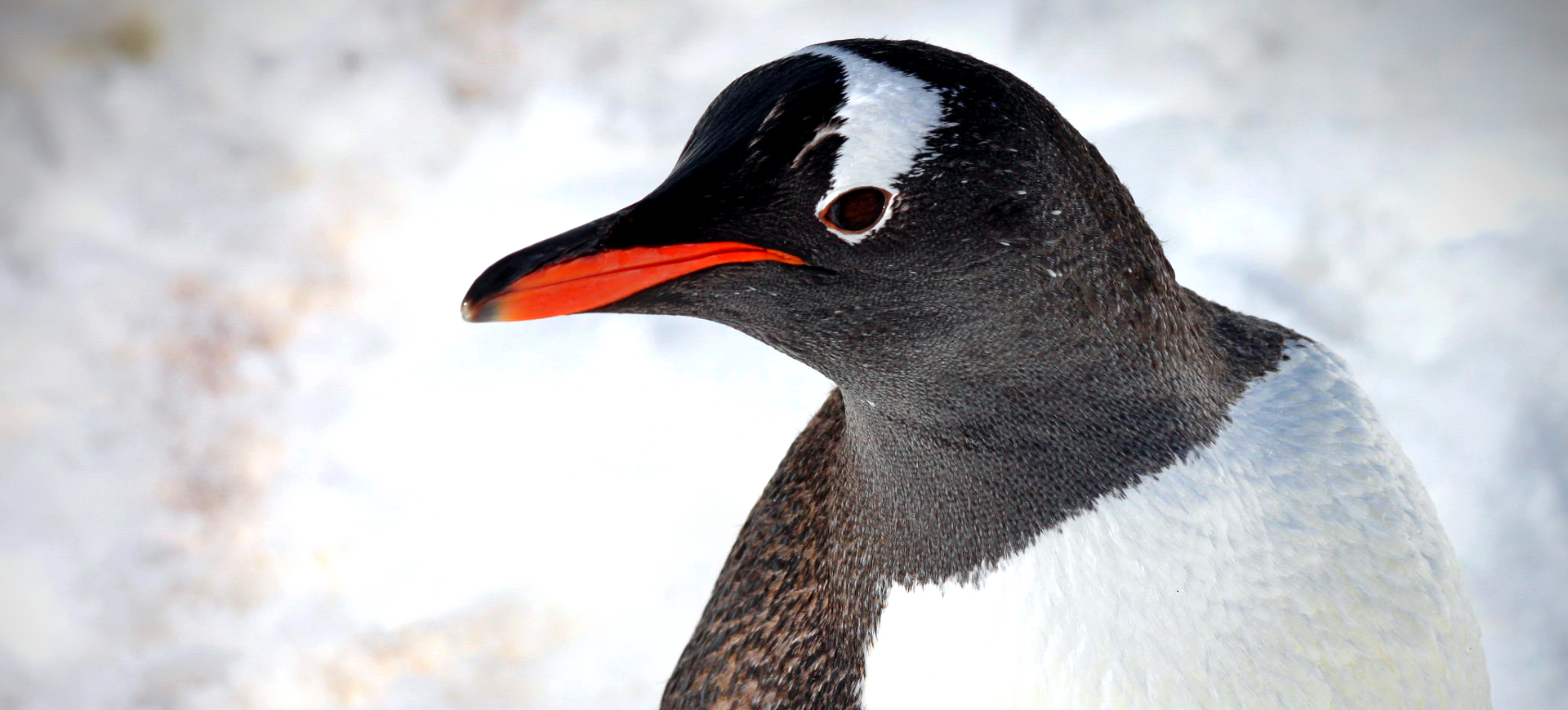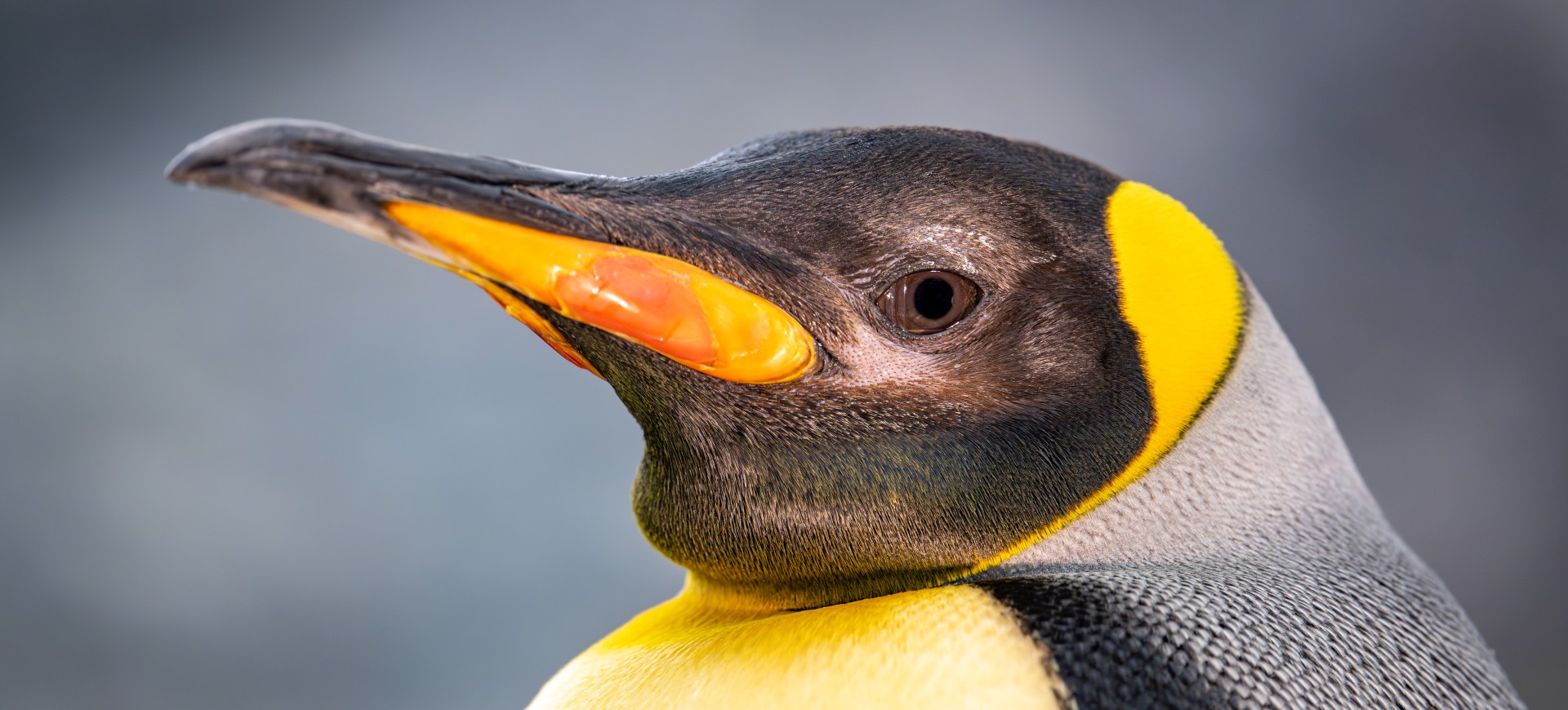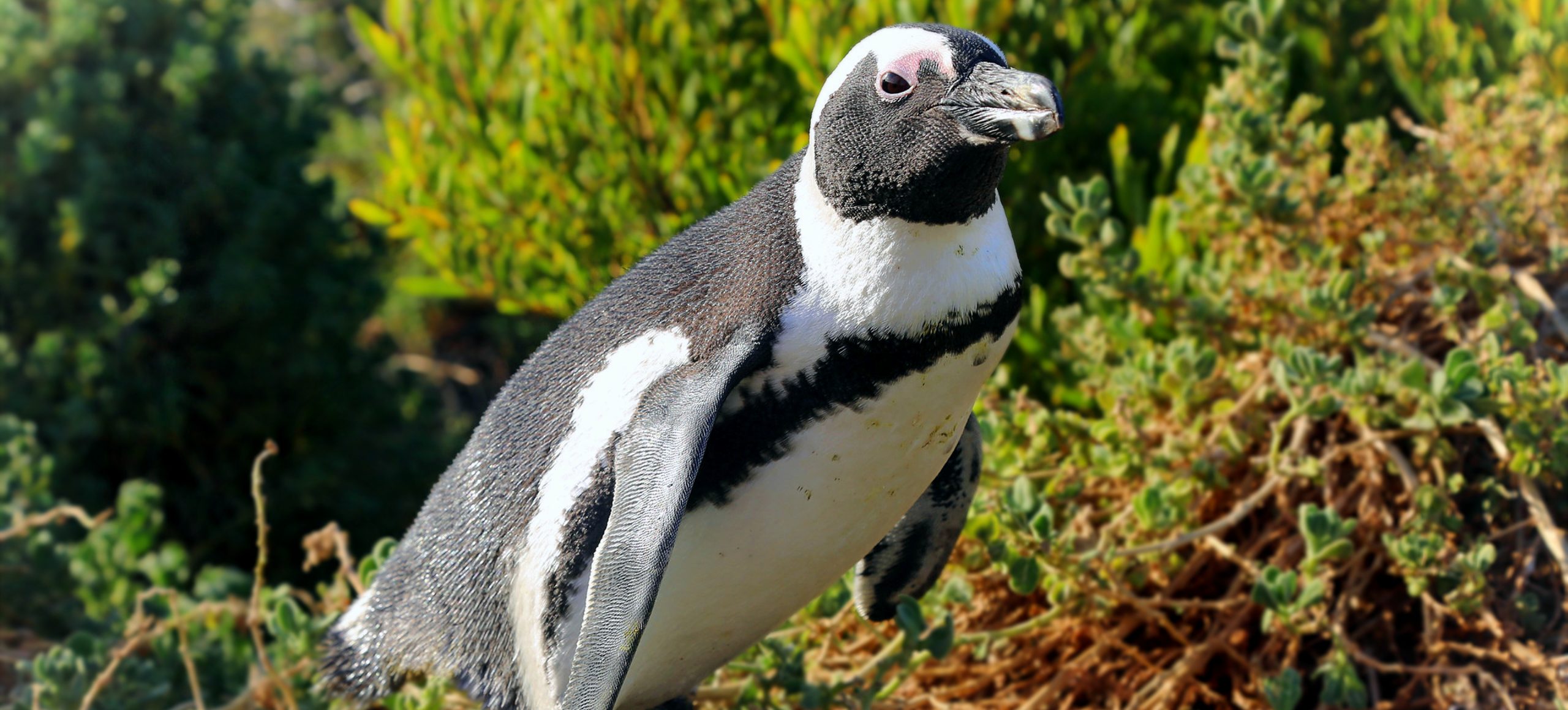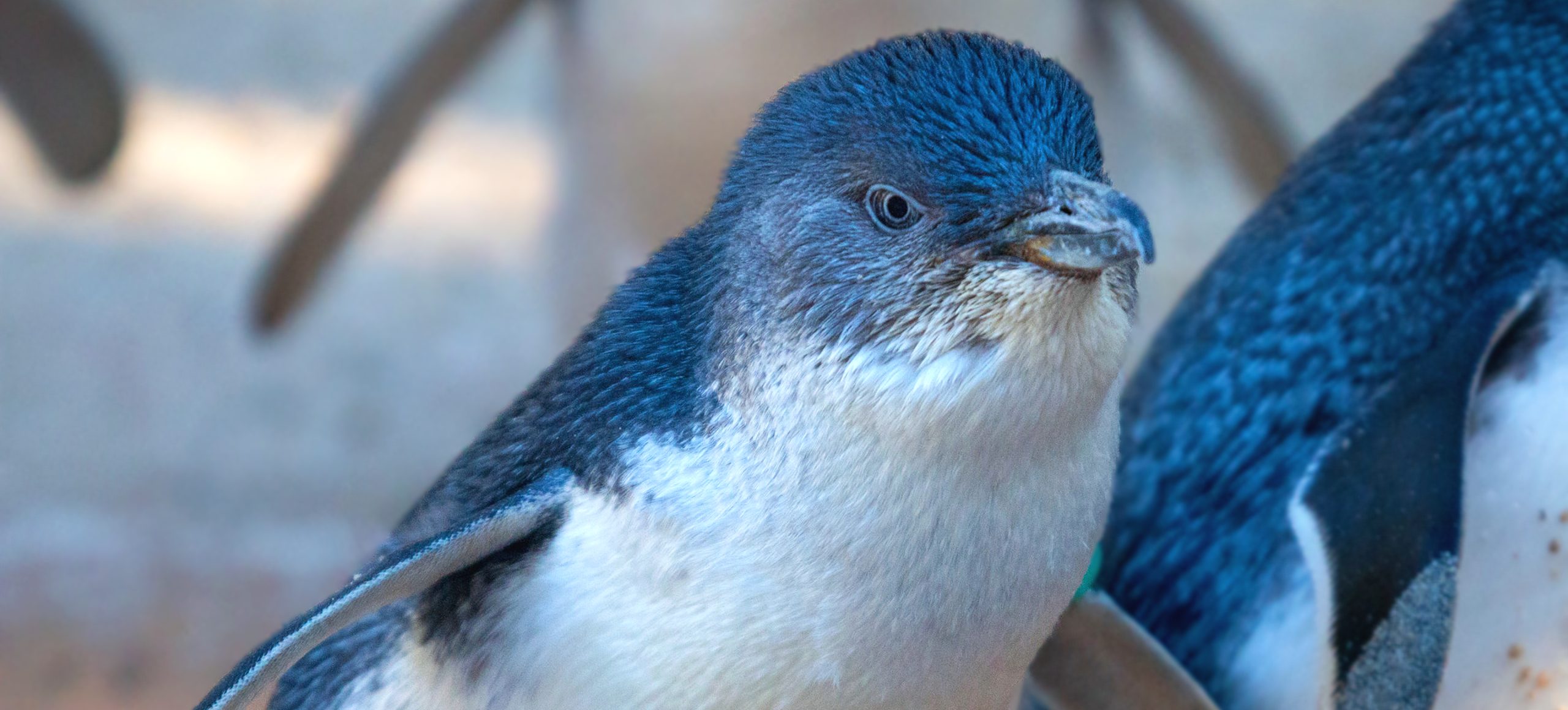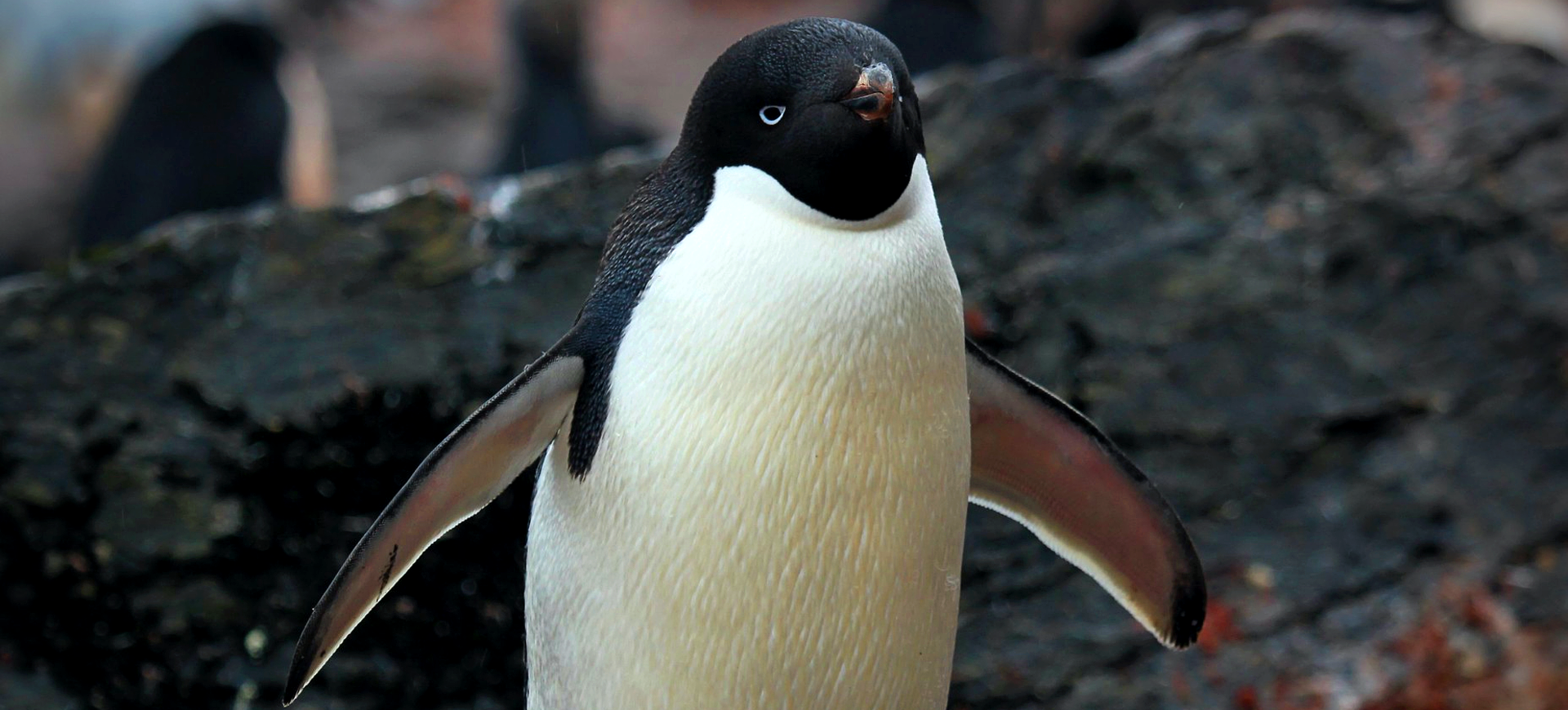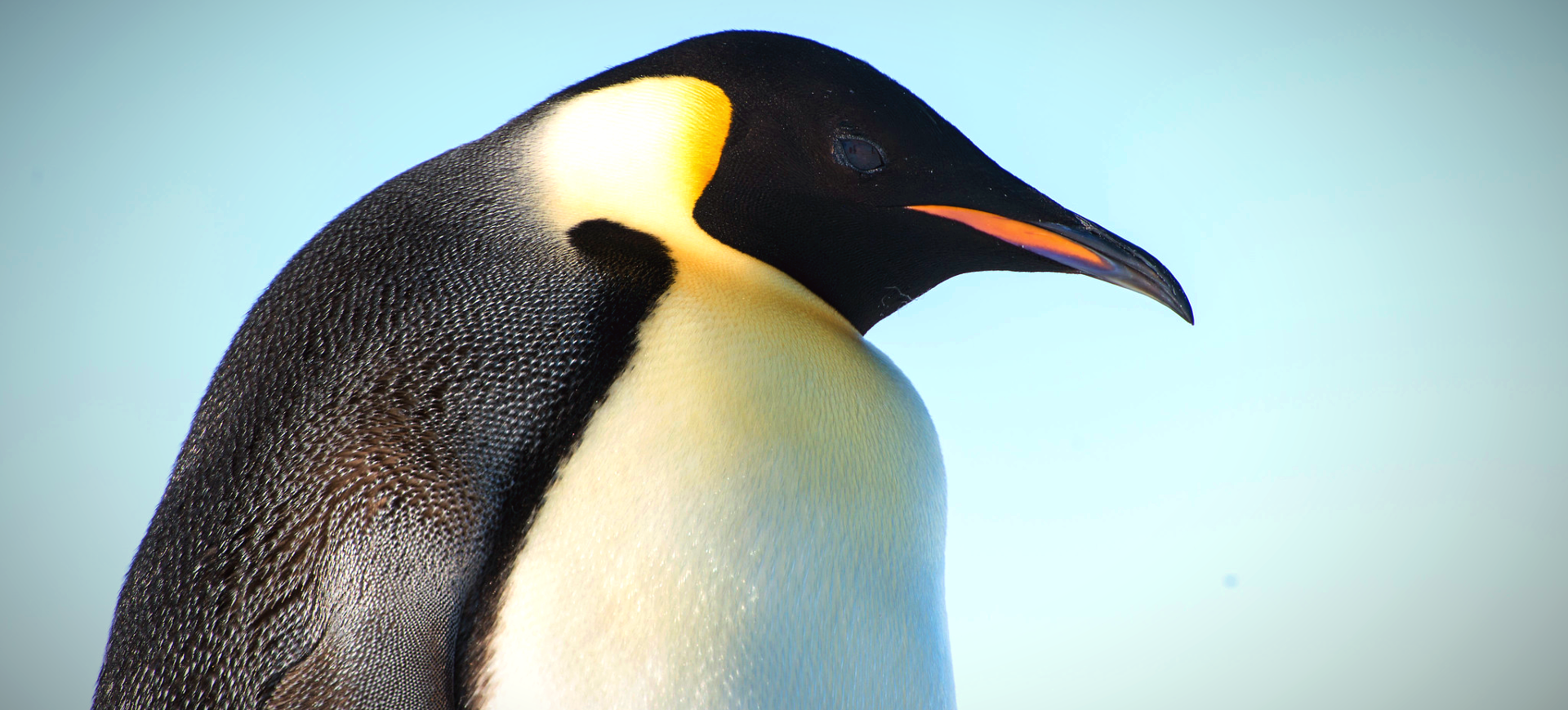Overview
The chinstrap penguin (Pygoscelis antarcticus) is a medium-sized penguin known for its distinctive black band running under its chin, giving it its name. It inhabits the Southern Ocean’s icy waters and rocky shorelines, particularly on sub-Antarctic islands and the Antarctic Peninsula. This highly social species forms large breeding colonies that can number in the hundreds of thousands. Chinstrap penguins are excellent swimmers, using their strong flippers to propel themselves through the water while hunting for krill and small fish.
Adapted to extreme cold, chinstrap penguins have a thick layer of blubber and dense waterproof feathers that insulate them from frigid temperatures. They exhibit strong site fidelity, often returning to the same nesting grounds year after year to breed. Their nests are simple scrapes lined with small stones, which help elevate eggs above melting snow and keep them dry. Both parents share responsibilities in incubating the eggs and feeding the chicks, demonstrating a high level of parental investment.
These penguins are known for their aggressive and territorial behavior, especially during the breeding season. They are vocal birds, using a range of calls and displays to communicate with mates and defend their nesting areas. Their populations are generally stable but are influenced by climate change, which affects their primary food source, Antarctic krill. Conservation efforts monitor their population trends and protect critical feeding and breeding habitats from environmental threats.
Taxonomy
Kingdom
Phylum
Class
Order
Family
Genus
Species
Type
Current distribution:
Chinstrap penguins have a wide distribution across the Southern Ocean, particularly in the Antarctic Peninsula and surrounding islands. The largest populations are found on the South Sandwich Islands, where millions of individuals breed annually. Smaller colonies exist in the South Orkney, South Shetland, and Balleny Islands, as well as on the northern coasts of Antarctica. They are highly migratory outside of the breeding season, traveling long distances in search of food.
Recent studies suggest population declines in some regions, likely due to changes in sea ice and krill availability. In contrast, some colonies have remained stable or even increased, highlighting regional differences in environmental impacts. Monitoring efforts focus on tracking population trends and understanding how climate change affects their primary food sources. Conservationists are particularly concerned about the effects of warming ocean temperatures on Antarctic krill populations, which could significantly impact chinstrap penguin numbers.
Physical Description:
Chinstrap penguins have a black head, back, and flippers, with a stark white face and underbelly, creating a sharp contrast that aids camouflage while swimming. Their most distinctive feature is the thin black band running under the chin from one side of the head to the other. Their short, sturdy beak is black, and their eyes are dark brown or black, giving them an intense expression. They have short, strong legs with pinkish webbed feet, adapted for swimming and waddling on rocky terrain.
Their compact and streamlined bodies are built for efficient swimming, allowing them to reach high speeds underwater. The dense, waterproof feathers provide insulation against the extreme cold, while a thick layer of blubber helps retain body heat. Juvenile chinstrap penguins have a duller appearance with less defined chin markings, which develop fully as they mature. Their flippers, covered in stiff, scale-like feathers, function like powerful paddles, enabling rapid propulsion through the water.

Lifespan: Wild: ~15 Years || Captivity: ~20 Years

Weight: Male: 8.8–11.7 lbs (4–5.3 kg) || Female: 7.9–10.4 lbs (3.6–4.7 kg)

Length: Male: 27–30 in (68–76 cm) || Female: 25–28 in (64–71 cm)

Height: Male: 27–30 in (68–76 cm) || Female: 25–28 in (64–71 cm)

Top Speed: 20 mph (32 km/h)
Characteristic:
Native Habitat:
Chinstrap penguins inhabit the Antarctic and sub-Antarctic regions, preferring rocky coastlines, ice-free slopes, and islands for nesting. They are most commonly found on the Antarctic Peninsula, the South Sandwich Islands, the South Shetland Islands, and other remote locations in the Southern Ocean. During the breeding season, they nest in large colonies on exposed rock or gravel surfaces, where they build simple nests using small stones. Outside of the breeding season, they spend most of their time at sea, swimming vast distances in search of food.
They are well adapted to extreme cold, relying on their thick blubber and dense feathers for insulation. Their breeding sites are typically in areas free from large ice coverage, as they require stable land for raising their chicks. Despite their preference for cold environments, they are highly mobile and can relocate to more suitable areas if climate changes. The presence of abundant krill and minimal human disturbance influence their habitat selection.
Climate Zones:
WWF Biomes:
Biogeographical Realms:
Continents:
Diet:
Diet & Feeding Habits:
Chinstrap penguins primarily feed on Antarctic krill (Euphausia superba), which makes up most of their diet. Depending on seasonal availability, they also consume other small crustaceans, squid, and small fish. These penguins are highly efficient hunters, capable of diving to depths of around 200 feet (60 meters) while pursuing prey. They use their sharp beaks to catch and swallow food quickly while underwater, minimizing energy expenditure.
Foraging trips can last several hours, during which they cover significant distances in search of food-rich waters. They often hunt in groups, which helps them locate and corral dense krill swarms more effectively. Chinstrap penguins rely on sea ice as a feeding platform, making them vulnerable to climate-related changes affecting ice cover and krill populations. Their ability to adjust their diet based on food availability helps them survive in the dynamic Antarctic ecosystem.
Mating Behavior:
Mating Description:
Chinstrap penguins form monogamous breeding pairs, often returning to the same mate each season to raise their young. The breeding season begins in October when males arrive at nesting sites and reclaim their territories before the females arrive. Courtship involves vocal displays and head-bobbing movements to strengthen pair bonds and establish dominance over nesting sites. Once bonded, the female lays two eggs, and both parents take turns incubating them for about 37 days.
After hatching, the parents alternate between foraging and guarding the chicks, ensuring a continuous food supply. Chicks are fed regurgitated krill and grow rapidly under their parents’ care. By about two months old, they form groups called crèches, huddling together for warmth and protection. Fledging occurs at around 50–60 days, after which the young penguins leave the colony and become independent.
Reproduction Season:
Birth Type:
Pregnancy Duration:
Female Name:
Male Name:
Baby Name:
Social Structure Description:
Chinstrap Penguins are highly social birds, living in large colonies that can number thousands. These colonies are noisy and bustling, with constant vocalizations and activity. Social interactions are crucial for their survival, especially during the breeding season when they rely on each other for mating and rearing offspring. They exhibit various social behaviors, including mutual preening and vocal communication, strengthening social bonds and facilitating colony life.
Outside the breeding season, Chinstrap Penguins exhibit social behavior at sea. They often forage in groups, which may provide safety from predators and increase foraging efficiency. Their complex social structure plays a vital role in their ability to thrive in the harsh Antarctic environment. Understanding their social dynamics is key to comprehending their behavior and ecology.
Groups:
Conservation Status:
Population Trend:
Chinstrap Penguins have one of the largest populations among penguin species. However, recent studies indicate a decline in some colonies, particularly those in the Antarctic Peninsula and South Sandwich Islands. This decline is attributed to various environmental changes, including shifts in sea ice extent and prey availability. Climate change significantly affects their food sources, particularly krill, which is central to their diet.
Despite these challenges, Chinstrap Penguins demonstrate a remarkable ability to adapt and survive. Their large colonies and widespread distribution are testaments to their resilience. However, continuous monitoring is essential to understand the long-term impacts of environmental changes on their population. Conservation efforts focused on protecting their habitat and mitigating the effects of climate change are crucial for their continued survival.
Population Threats:
The primary threats to Chinstrap Penguins include climate change and its impact on their habitat and food sources. Warming temperatures and changing sea ice patterns affect the availability of krill, their primary food. Overfishing in the Southern Ocean also reduces their food supply, directly impacting their survival and breeding success.
Human activities, such as pollution and habitat disturbance, pose additional threats. Oil spills and marine pollution can have devastating effects on penguin colonies. Furthermore, increased human presence in Antarctica for research and tourism can disturb their breeding sites. These factors and climate change create a challenging environment for Chinstrap Penguins.
Conservation Efforts:
Conservation efforts for Chinstrap Penguins focus on protecting their habitat and managing human activities in the Antarctic region. The Antarctic Treaty System and the Commission for the Conservation of Antarctic Marine Living Resources (CCAMLR) play crucial roles in conserving their environment. These international agreements regulate fishing, minimize pollution, and manage tourism to reduce human impact on penguin colonies.
Research and monitoring are vital components of conservation strategies. Scientists study penguin populations to understand the impacts of environmental changes and inform conservation policies. Efforts to combat climate change globally are also essential to protect the Antarctic ecosystem and ensure the survival of Chinstrap Penguins and other wildlife.
Additional Resources:
Fun Facts
- Chinstrap Penguins can dive up to 70 meters deep and hold their breath for up to two minutes.
- They are among the most aggressive penguin species, often engaging in fierce territorial disputes.
- Chinstrap Penguin colonies can be extremely large, with some containing over 100,000 pairs.
- These penguins have a unique vocalization known as a “donkey call,” which is loud and braying.
- Despite their clumsiness on land, they are agile and graceful swimmers.
- Chinstrap Penguins can last for up to a month during the breeding season.
- They use stones to build their nests, often stealing them from neighboring nests.
- Their name comes from the narrow black band under their head, which looks like a chinstrap.
- The first scientific description of the Chinstrap Penguin was by German naturalist Johann Reinhold Forster in 1781.
- They are among the few animals whose natural habitat is almost exclusively in Antarctica.


